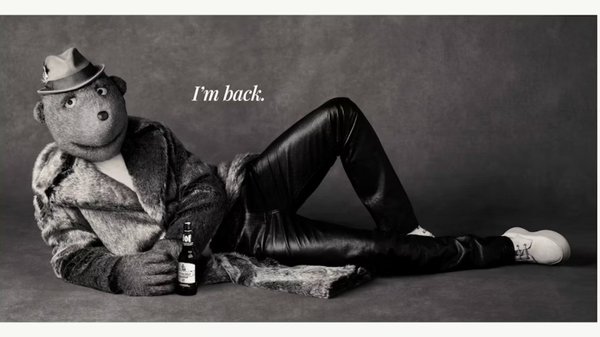Why serious times call for funny advertising /
The world is a serious place right now, says Lucky Generals’ head of special ops, Paul Mallon, but that’s no reason why brands should be afraid to be funny
Contagious Contributor
/
Around 143 million mammals got torched in those Australian bush fires a couple of years back. No great giggles to be found there.
We bounced to a global pandemic and the threat of nuclear war, via a rogue invasion. Not amazingly funny (notwithstanding Ukrainian tractors towing away captured Russian tanks).
Chuck in a bejewelled future king sitting on a golden throne bemoaning a cost of living crisis and you’ve got a general deficit of the lols.
The world is a serious place right now with a creaking mental load for people to carry.
Research shows that the use of comedy in advertising is in freefall too – right at a time when people need entertainment most.
Kantar’s recent AdReaction study showed that humour is the most powerful way to get people on board with your brand message. It crosses generations and makes your advertising stand out from the crowd. Humorous ads are more expressive (+27 point increase), more involving (+14) and more distinct (+11). And people love it, done well.
But over the last 20 years humour in advertising has gone through the floor, whether childish pranks, shock-value tactics, put-downs or clever wit.
The big fear is, of course, using humour inappropriately (as called out in the Kantar piece) and the damage that could do to your brand. Being ‘cancelled’ is no laughing matter.
Some observers have linked this decline to the rise in purpose-driven advertising, arguing that we’ve traded belly laughs for tinkly piano tracks and sad voices. There’s some truth in that, but humour and purpose aren’t incompatible either. In fact, there have been plenty of great campaigns that have used a light touch to convey serious messages – from Dumb Ways to Die in Australia to the ground-breaking Rainbow Laces campaign tackling homophobia in football (but the fact we’re going back about 10 years recalling these says something).
At Lucky Generals a new business prospect recently paid us a back-handed compliment. ‘I love lots of your work,’ he said. ‘But a lot of it is very funny.’ As you’d expect, the chiefs got a little defensive. For instance, we pointed out the hard-hitting work we’d done for timeTo, to combat sexual harassment. We highlighted our highly emotional holidays campaigns for Amazon. And what about our rousing relaunch of Virgin Atlantic?
Anyway, in the end he wasn’t convinced. But to be honest, we weren’t either – by the implication that being ‘very funny’ was a bad thing. The ability to raise a laugh is a pretty important part of any agency’s armoury – so to see it as a negative seems plain wrong too.
Being slapstick has always been a particular bugbear. But show us a bit of ballsy, original, even darkly creative humour – and that’s the stuff that’ll get shared. (We shouldn’t just be out for controversy or playing to the gallery for the sake of disposable giggles, as that’s the stuff that tends to grate quickly).
Emer McCarthy is a brand leader who knows a thing or two about the subject, previously at Paddy Power and now head of brand at Irish e-commerce unicorn Wayflyer.
‘There should be a solid strategic reason why humour is an attribute of your brand. It takes a lot of investment. And there are so many ways into humour,” she says. “Anyone can be slapstick. Anyone can land a pun. But what really gets people to giggle and appreciate you for it, is when you say the things that others wouldn’t dare. That’s brave. Most “funny” brands are not brave enough. Especially not these days. It takes time and money to make your audience laugh, but most of all, it takes balls.’
So if there’s a callout for brands to be funnier and braver in how they deliver work, what does it take to get this stuff out into the world, presuming your idea is on the right track for laughs or to at least raise a smile?
Here’s some critical steps, from experience client-side:
Getting internal buy-in is of course essential but going too far around the houses is a sure-fire way to getting a good idea killed (especially as humour is so subjective). Trust in a few valued comrades for their opinions.
What could possibly go wrong? No, seriously. Any good idea (whether a funny film or provocatively humorous activation) should be backed by a solid bit of risk analysis. Map that stuff out.
Yes, you might offend somebody. Once you live with this, it’ll make that decision to publish work a lot easier. And in the words of the great Tony Soprano: ‘More is lost from indecision than a wrong decision.’
So come on, marketers, brands, agencies. Show us some balls. There’s a cultural window right now in England to show up, entertain and have a bit more craic on show.
After all, it's a bit odd if your marketing doesn’t see any role for humour. Funny, even.
Get Contagious Membership /
Contagious membership gives you access to Contagious Online, a constantly updated and fully searchable repository of advertising case studies, in-depth strategy interviews and other resources designed to help you achieve winning ideas fast. To find out more about Contagious Online or to arrange a free trial, click here.
Want more of the same? /
We don’t just write about best-in-class campaigns, interviews and trends. Our Members also receive access to briefings, online training, webinars, live events and much more.







